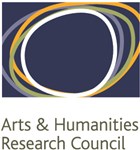Short term morphosyntactic change
Corbett (1993) - STMC bibliography
Reference
Corbett, Greville G. 1993. The head of Russian numeral expressions. In Greville G. Corbett, Norman Fraser & Scott McGlasham (eds.). Heads in grammatical theory, 11-35. Cambridge: Cambridge University Press.
Summary
This article discusses the criteria for establishing the head in a syntactic construction. The data for such discussions have been so far mainly taken from English. The article extends the investigation to a language with richer morphology and examines one of the most problematic constructions in Russian: numeral expressions with ‘two’, ‘three’ and ‘four’ (e.g., dva žurnala, ‘two magazines’). The author tests two sets of criteria for head-identification: those suggested by Zwicky (1985) and those proposed by Hudson (1987). The application of the two analyses gives different results: on Zwicky’s account, head-like properties in such phrases are split between the noun and the numeral, while Hudson’s criteria allow the assignment of head properties exclusively to the numeral. Taking this discussion further, Corbett tests both sets of criteria on more complex numeral expressions with adjective-noun combinations (such as dva novyx žurnala, ‘two new magazines’) and shows that under Hudson’s approach the head may not be unambiguously identified unless an adjective is counter-intuitively recognized as the head. Zwicky’s criteria, on the contrary, consistently identify the noun as the head.
The constructions under consideration are:
Quantified expressions with ‘two’, ‘three’, ‘four’ plus a noun:
| (1) | dva | žurnala |
| two | magazine-SG.GEN | |
| ‘two magazines’ | ||
Quantifier expressions with ‘two’, ‘three’, ‘four’ plus an adjective-noun combination:
| (2) | dve | interesn-ye / interesn-yx | knig-i |
| two | interesting-NOM / interesting-GEN | book-SG.GEN | |
| ‘two interesting books’ | |||
Quantifier expressions with ‘two’, ‘three’, ‘four’ and post-nominal adjectival and participial phrases (Worth’s riddle) :
| (3) | dva | trona | soedinenn-yx | meždu | soboj |
| two | thrones | connected-GEN | between | selves | |
| ‘two thrones, joined together’ | |||||
| (4) | dve | puški, | otlit-ye | v | 1590 | godu |
| two | cannons | cast-NOM | in | 1590 | year | |
| ‘two cannon, cast in 1590’ | ||||||
Texts investigated
A corpus of thirty nine prose works (novels, short stories and non-fiction including four translations) from 1970-1980 was established and examined.
Statistics
Frequencies of nominative / genitive modifiers in quantifier phrases with ‘two’, ‘three’, ‘four’, where a quantifier precedes an adjective-noun combination are given with respect to the gender of the noun and the value of the quantifier. Raw figures and percentages are given separately for phrases with masculine, feminine and neuter nouns. For phrases with feminine nouns, percentages are given separately for each quantifier. The sample is strictly restricted to constructions with a modifier at the position between numeral and noun. Primary data is contrasted with data from other linguistic sources (Gallis 1947, Suprun 1957, Worth 1959).
Which data from the source were used
The original statistics are presented in full in the database.
References
Gallis, Arne. 1947. Tallordenes syntaks i russisk. In Festkrift til Professor Olaf Broch p å hans 80- årdsdag fra venner og elever, 63-75. Oslo: Norske Videnskaps Akademi i Oslo.
Hudson, Richard. 1987. Zwicky on heads. Journal of Linguistics 23. 109-132.
Suprun A. E. 1957. K upotrebleniju roditel ´nogo i imenitel´nogo padežej množestvennogo čisla prilagatel´nyx v sočetanijax s čislitel´nymi dva, tri, četyre v sovremennom russkom jazyke. Učenye zapiski Kirgizskogo gosudarstvennogo pedagogičeskogo instituta 3. 72-84.
Worth, Dean S. 1959. Grammatical and lexical quantification in the syntax of the Russian numeral. International Journal of Slavic Linguistics and Poetics 1-2. 117-132.
Zwicky, Arnold M. 1985. Heads. Journal of Linguistics 21. 1-29.
Project members
Prof Greville G. Corbett
Dr Matthew Baerman
Dr Dunstan Brown
Dr Alexander Krasovitsky
Dr Alison Long
Period of award:
September 2004 - May 2008
Funder
Arts and Humanities Research Council (AHRC) - RG/AN4375/APN18306
TOP

